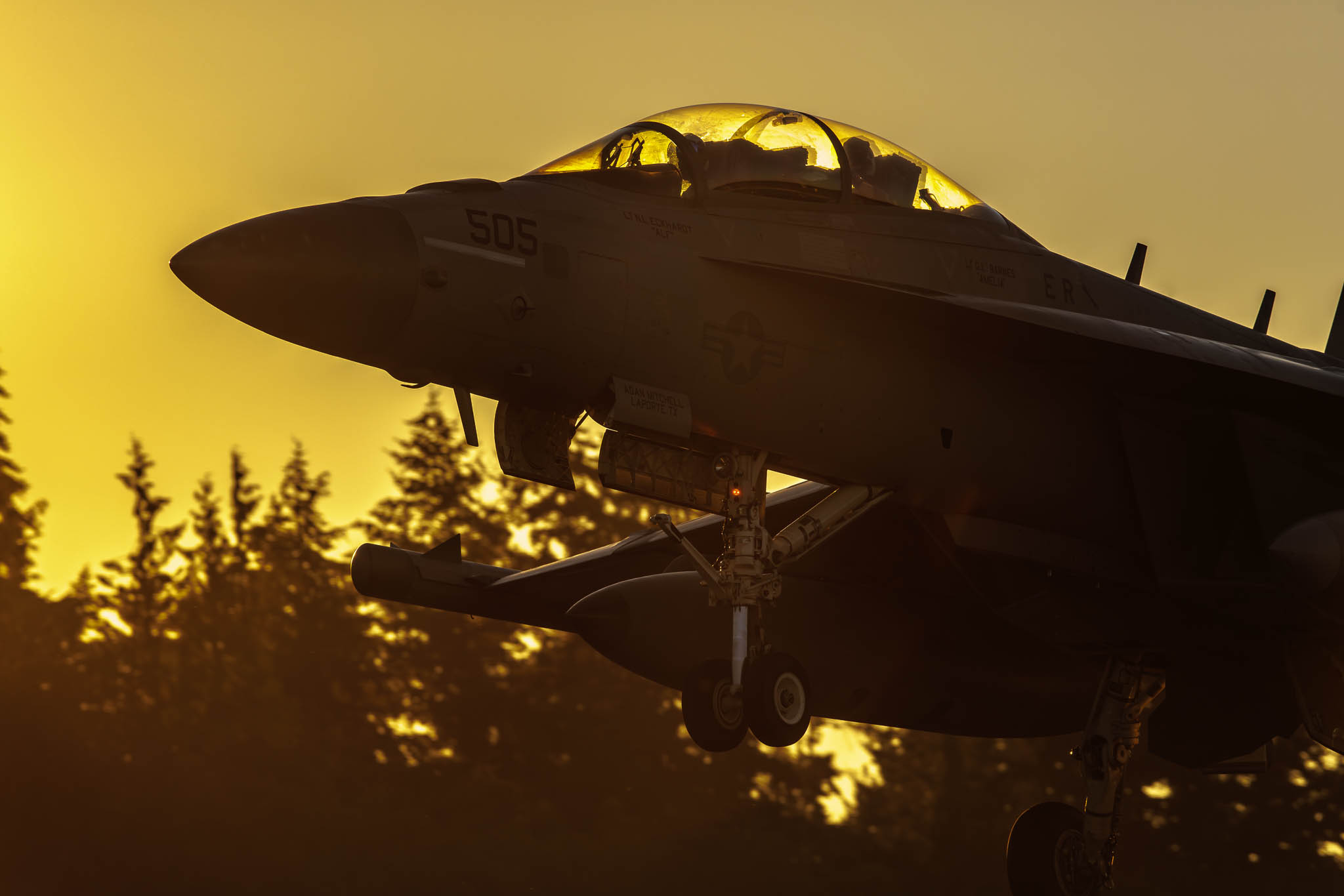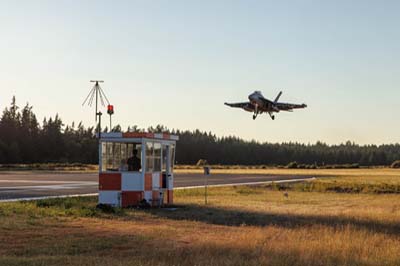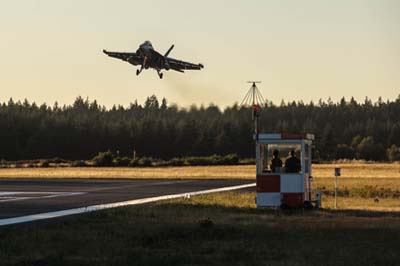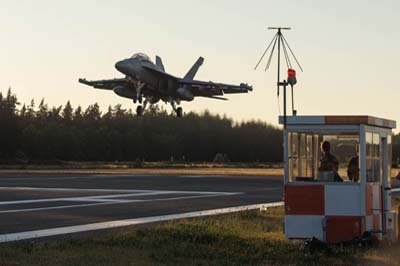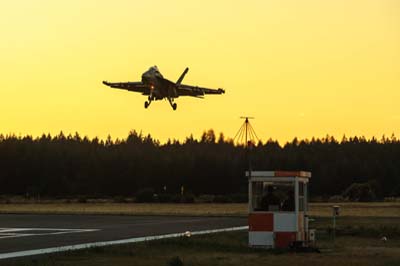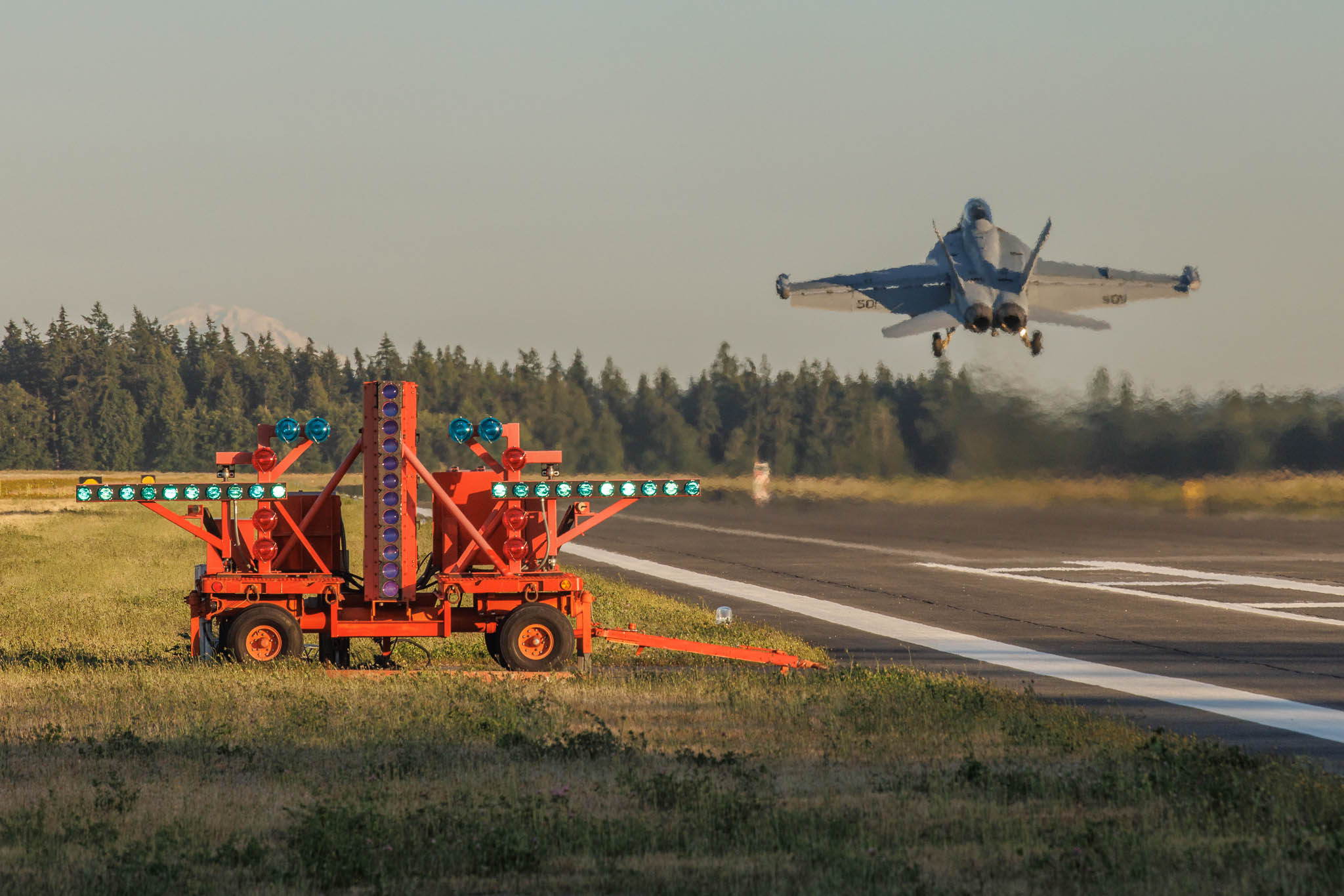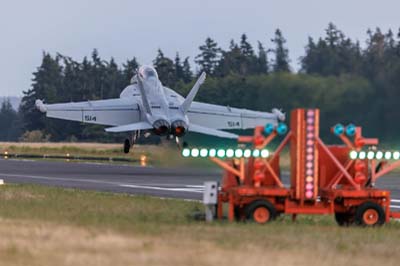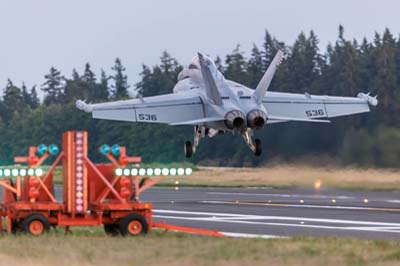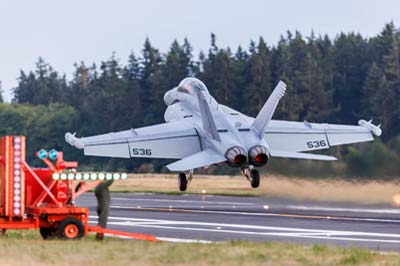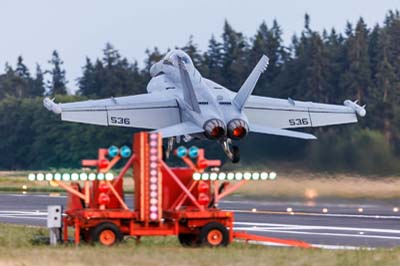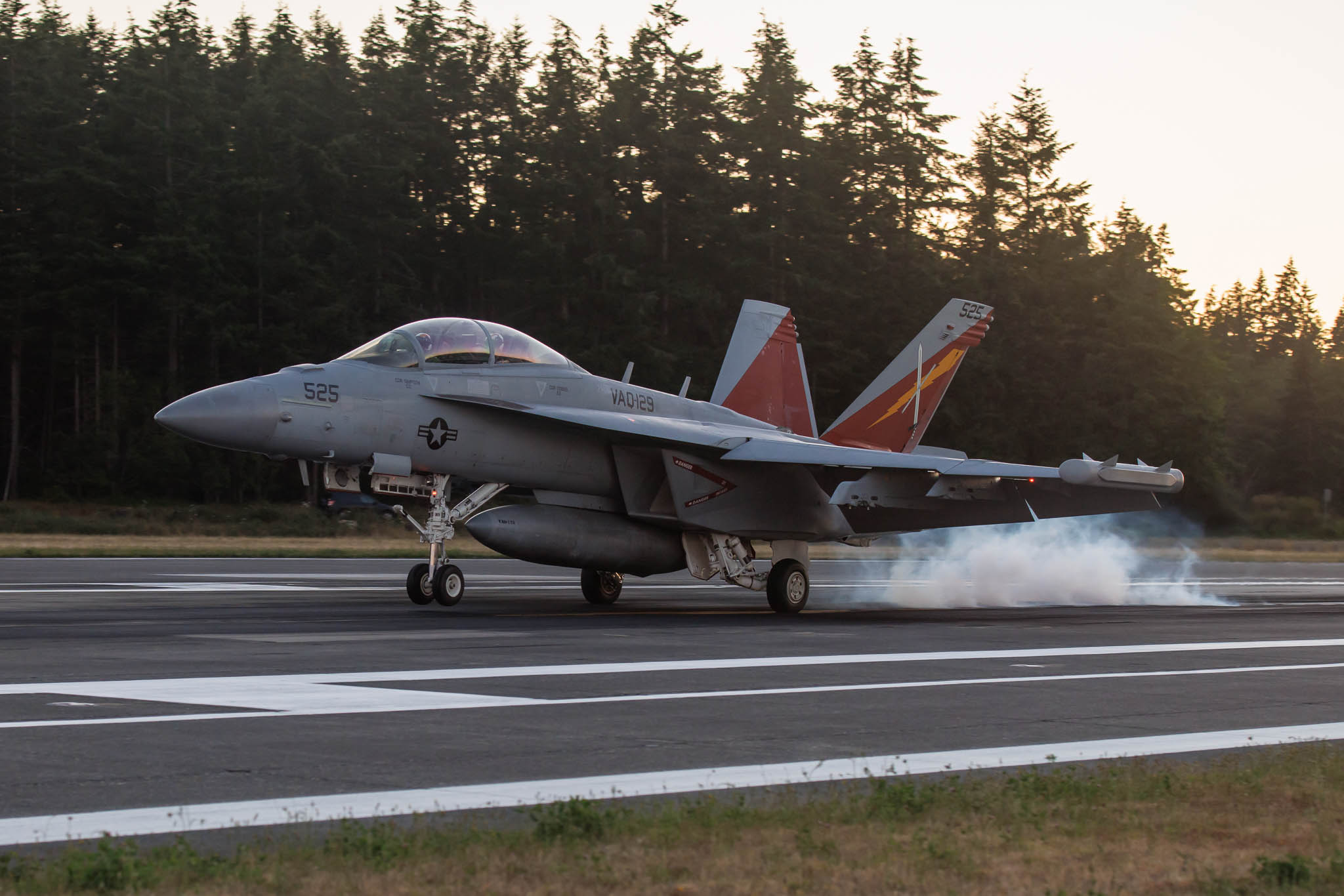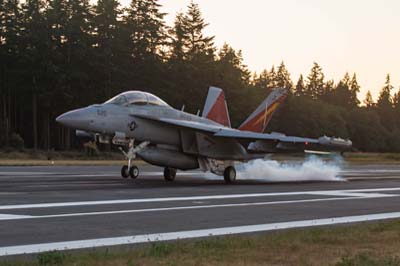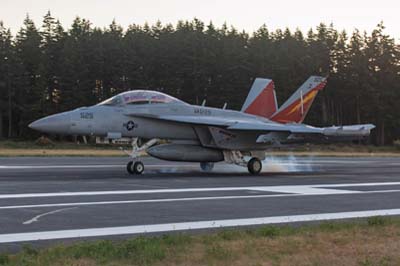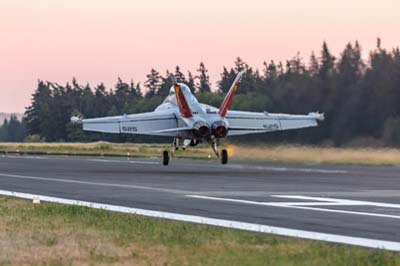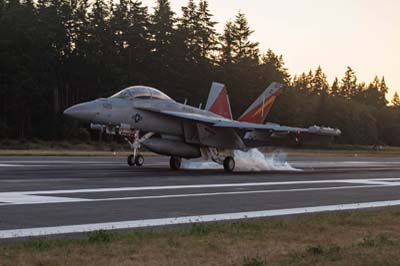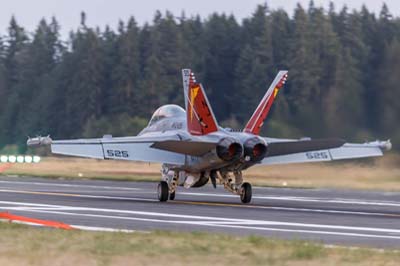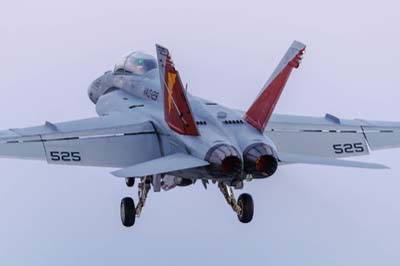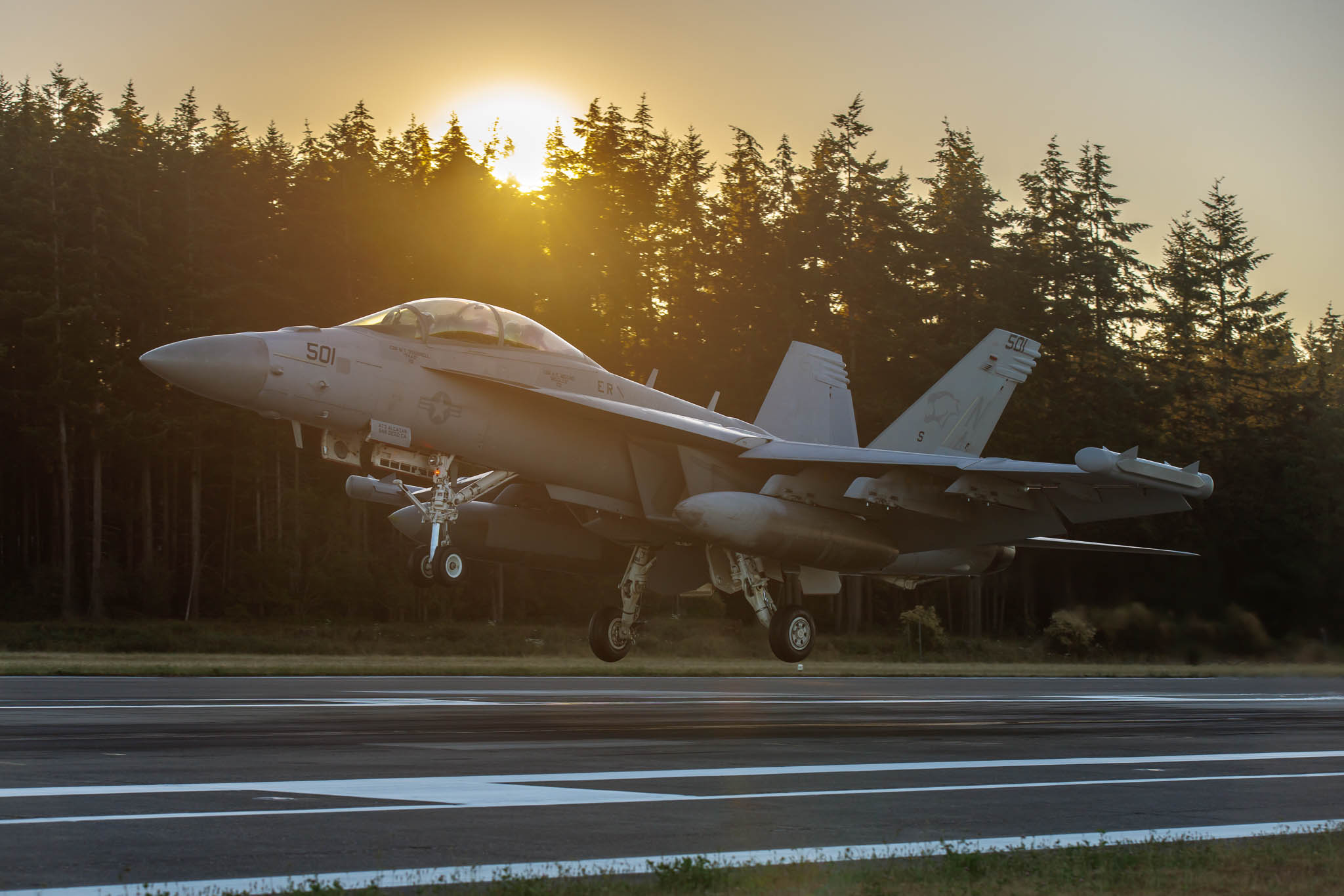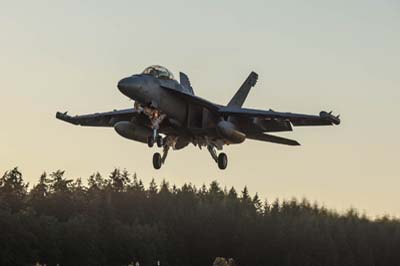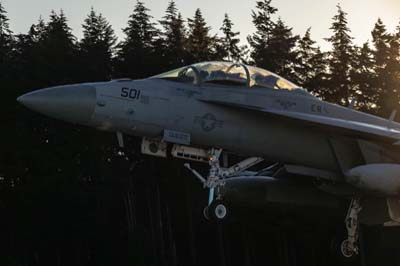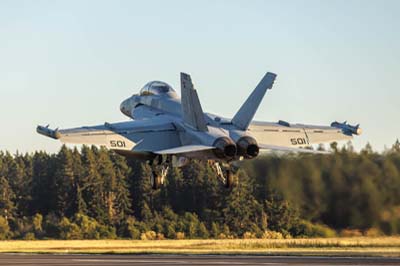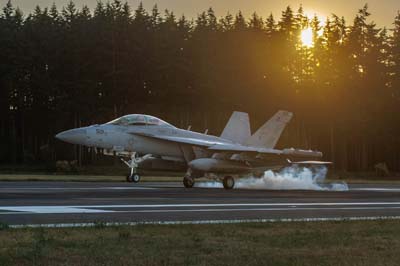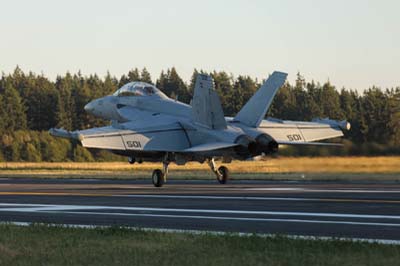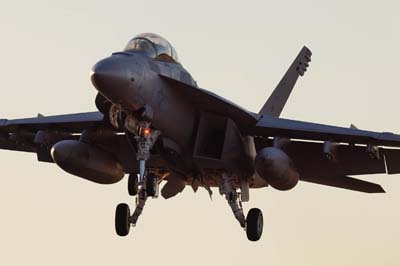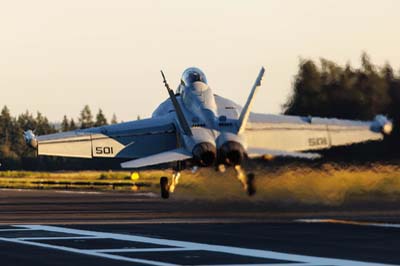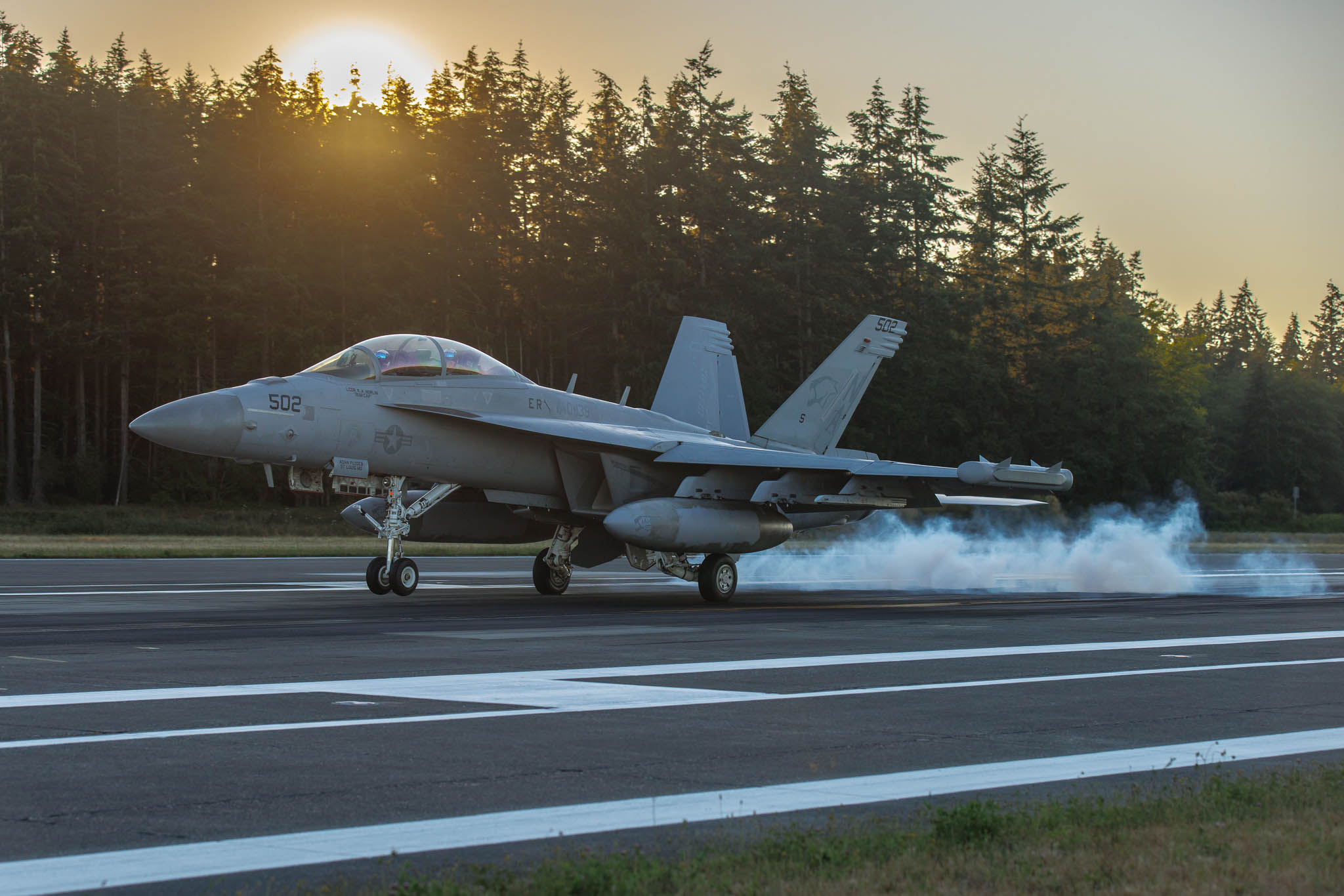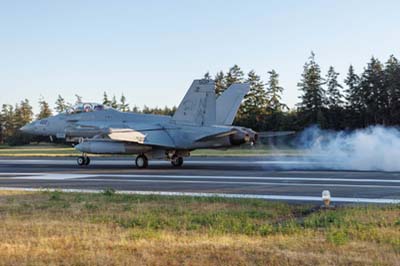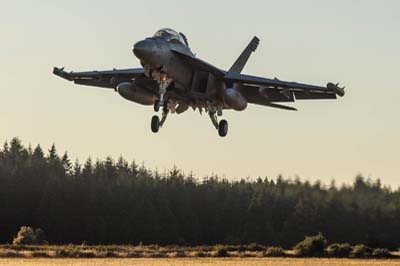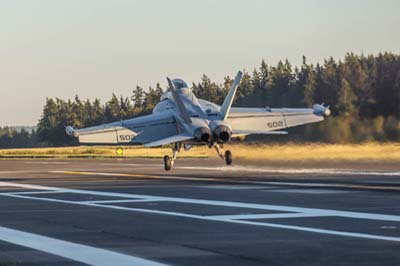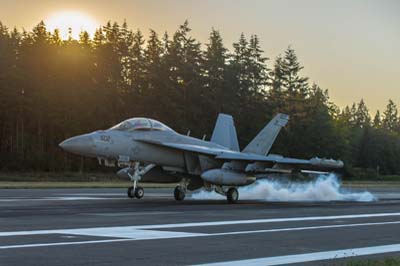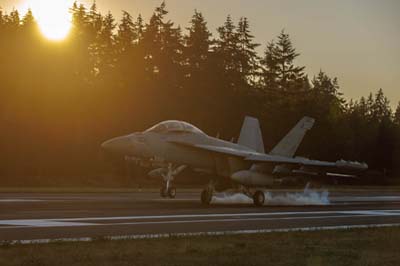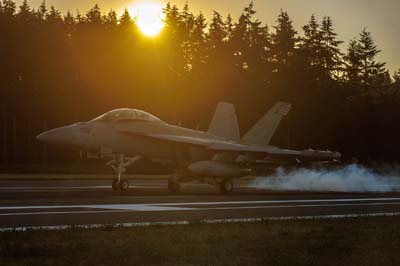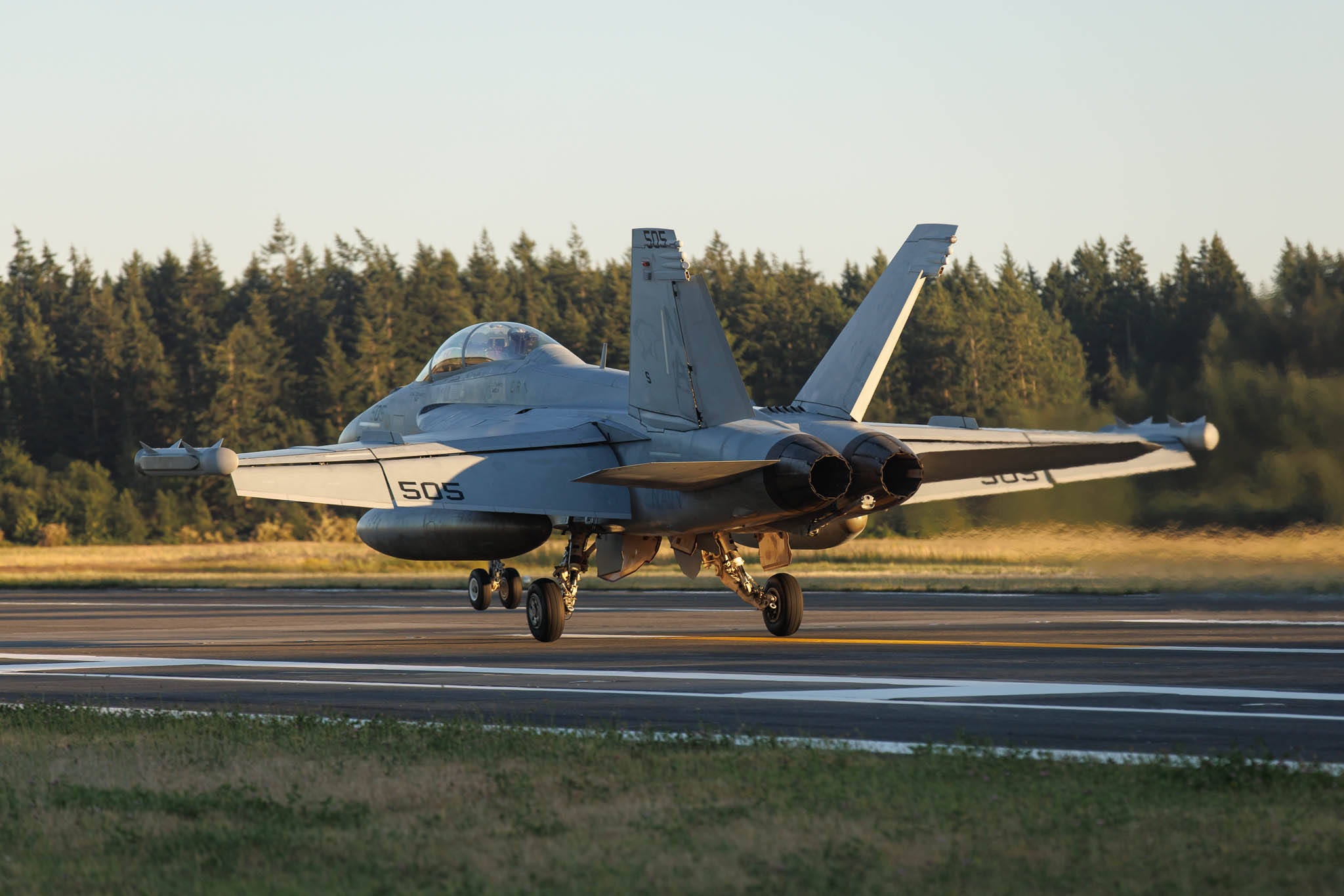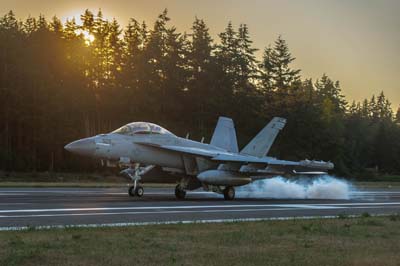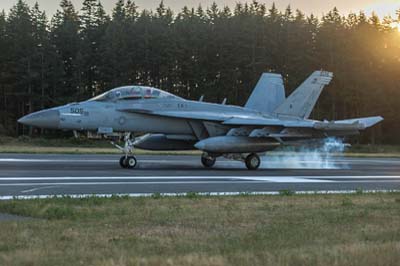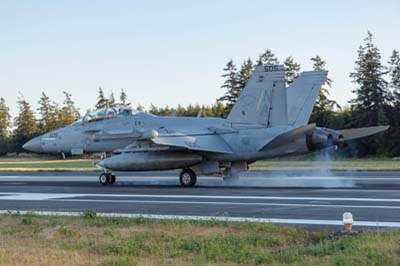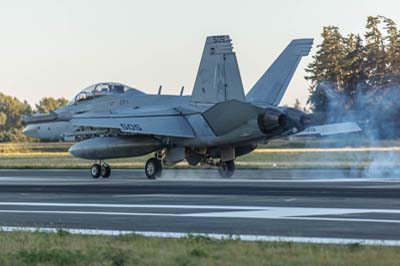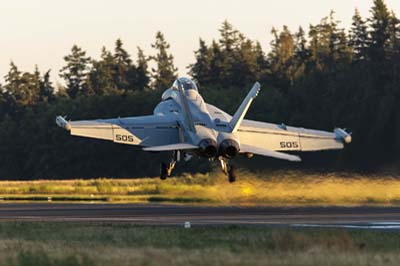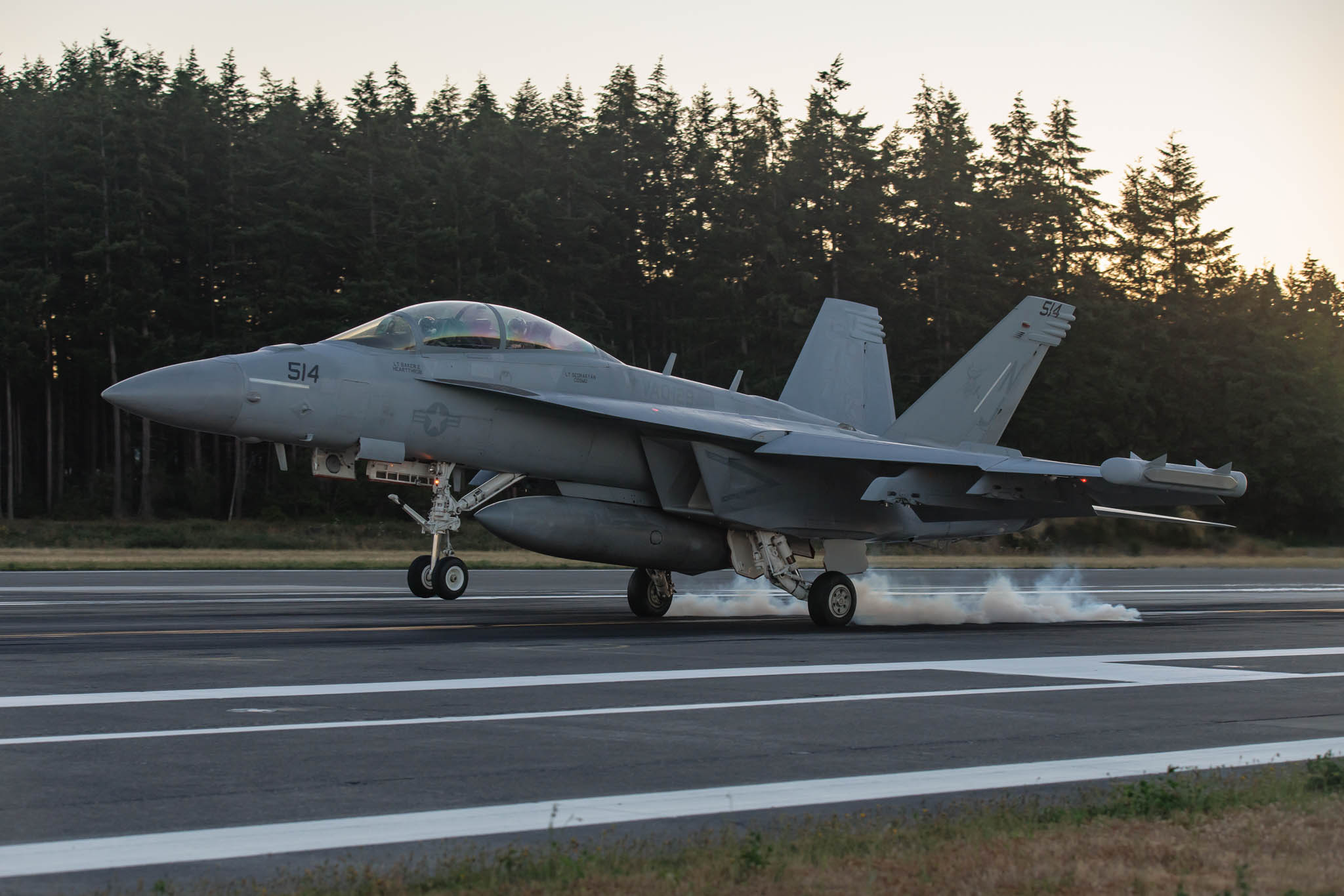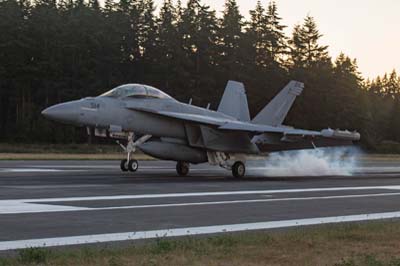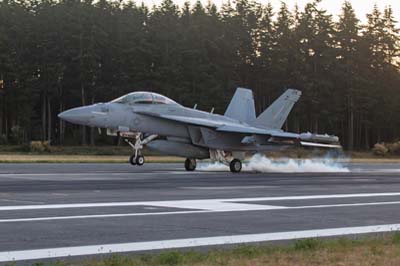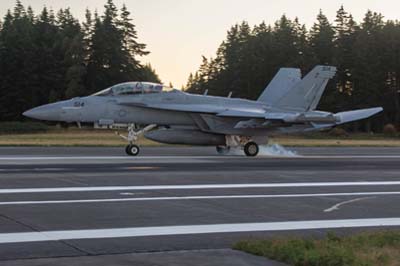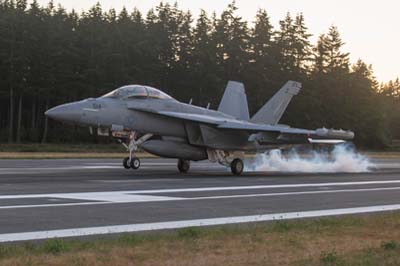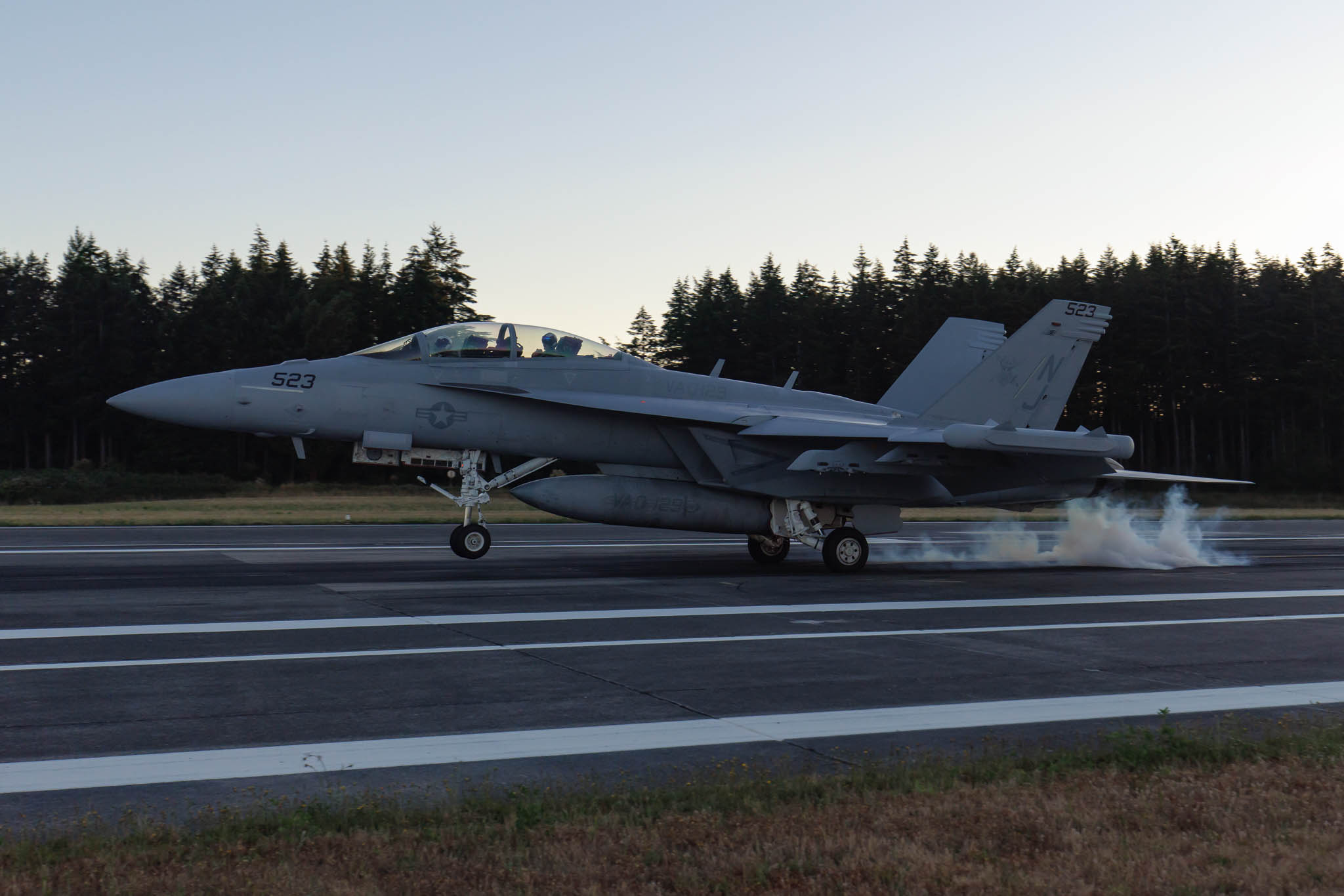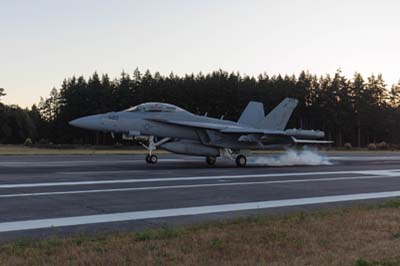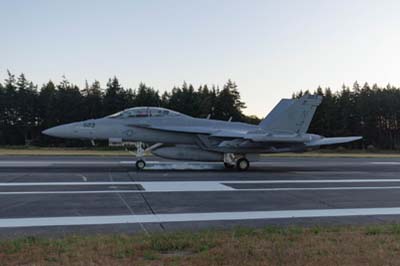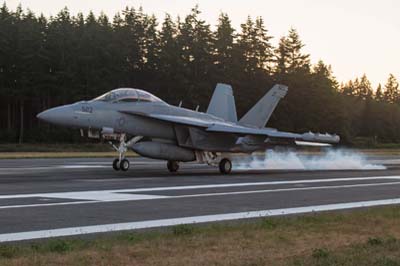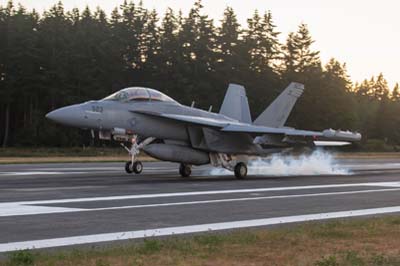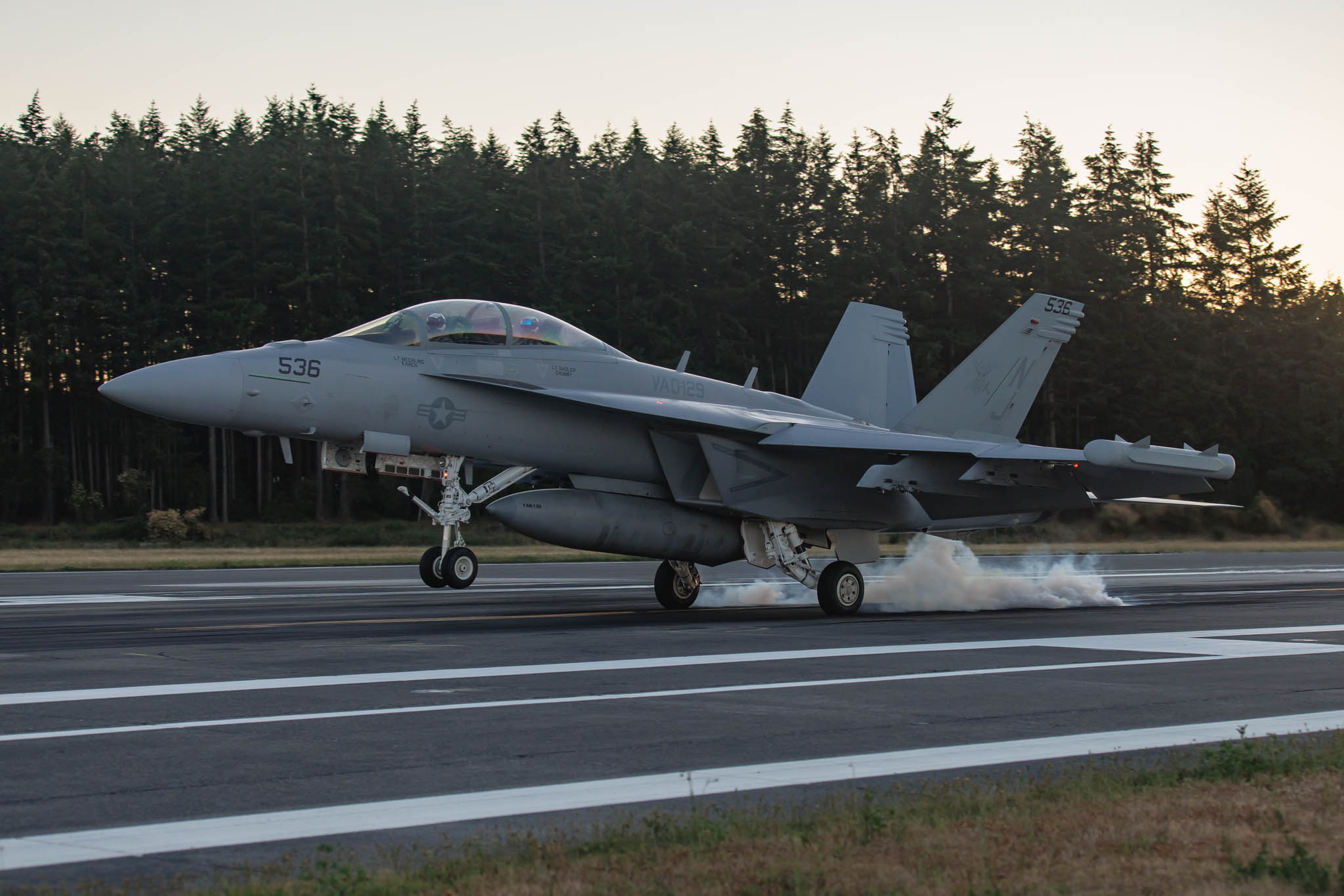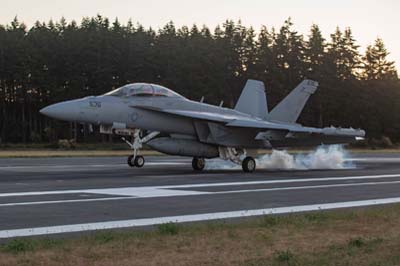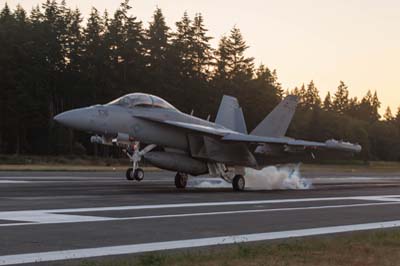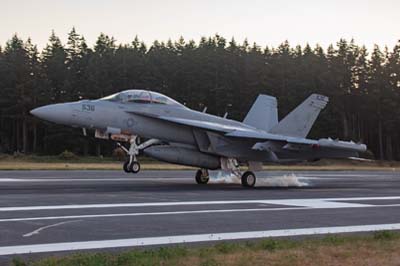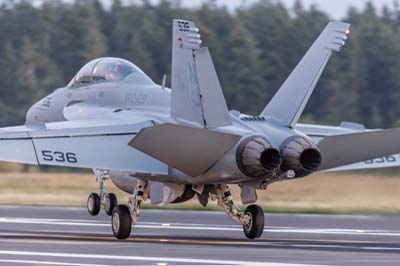Field Carrier Landing Practice
NOLF Coupeville
Whidbey Island, Washington
July 9, 2024
|
The Naval Outlying Landing Field (NOLF) in Coupeville is frequently used by US Navy aircraft based at nearby Naval Air Station (NAS) Whidbey Island, for carrier-based flight training operations. Whilst the runway at Coupeville is not long enough for actual landings of Boeing EA-18G Growlers it is suitable for field carrier landing practice (FCLP) to make sure naval aviators are up to standard, just before deploying to an aircraft carrier. The runway is equipped with the optical landing system similar to that on an aircraft carrier. The Landing Signal Officer (LSO) in the 'shack' at the end of the runway will mark the pilots who make at least six simulated carrier landings or rather touch and goes.
Late evening landings from the north on runway 14 at NOLF Coupeville. |
| Left to right: The Landing Signal Officer (LSO) in the 'shack' at the end of the runway will mark the pilots who make at least six simulated carrier touch downs. |
| Left to right: The optical landing system (OLS) is used to give glidepath information to pilots in the final phase of landing on an aircraft carrier. |
| Left to right: EA-18G Growler (166895 'NJ-525') with Electronic Attack Squadron 129 (VAQ-129) 'Vikings'. |
| Left to right: EA-18G Growler (168372? 'NA-501') with Electronic Attack Squadron 139 (VAQ-139) 'Cougars'. |
| Left to right: EA-18G Growler (169134 'NA-502') with Electronic Attack Squadron 139 (VAQ-139) 'Cougars'. |
| Left to right: EA-18G Growler (168904 'NA-505') with Electronic Attack Squadron 139 (VAQ-139) 'Cougars'. |
| Left to right: EA-18G Growler (166900? 'NJ-514') with Electronic Attack Squadron 129 (VAQ-129) 'Vikings'. |
| Left to right: EA-18G Growler (168261? 'NJ-523') with Electronic Attack Squadron 129 (VAQ-129) 'Vikings'. |
| Left to right: EA-18G Growler (169406? 'NJ-536') with Electronic Attack Squadron 129 (VAQ-129) 'Vikings'. |
